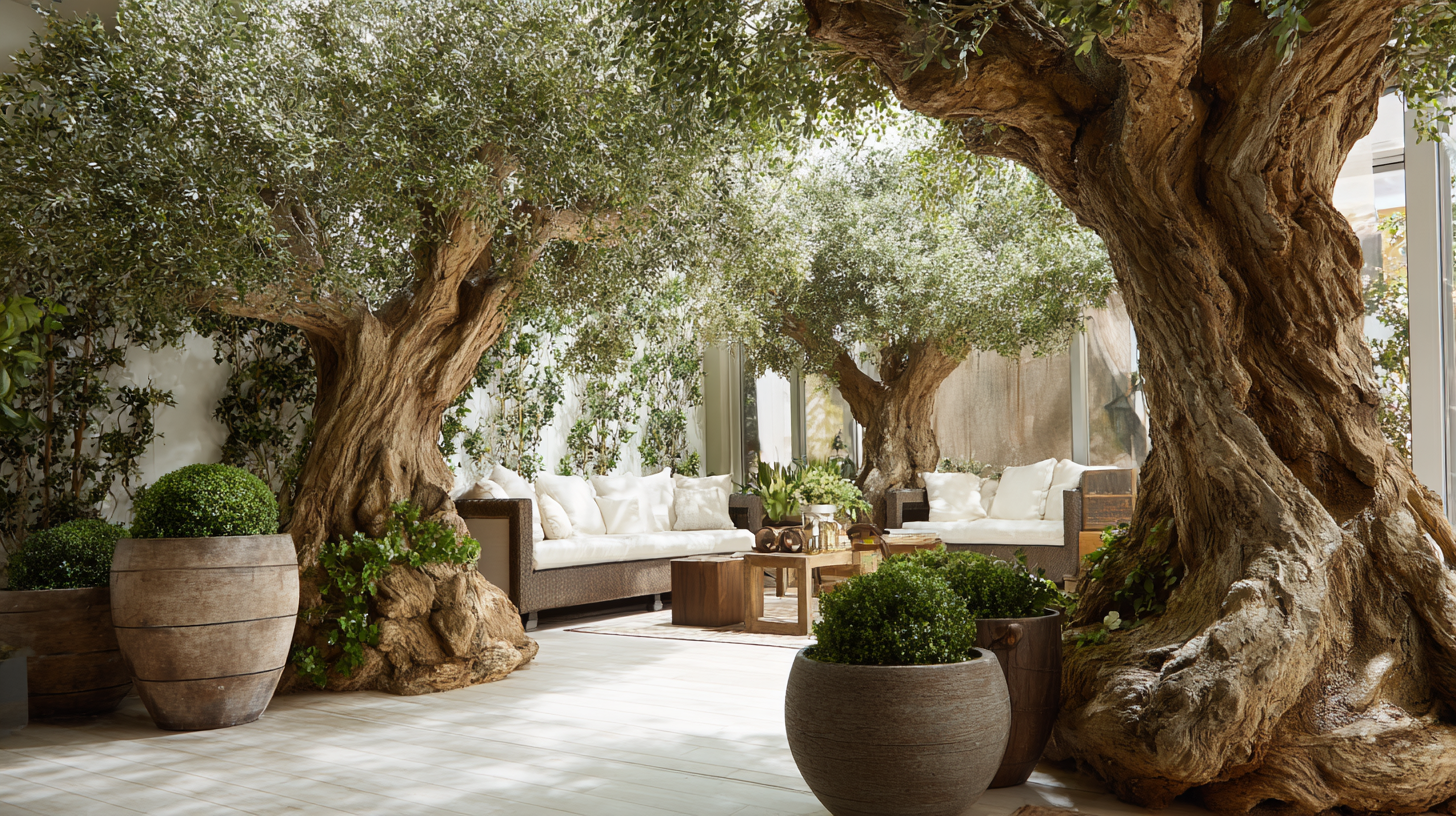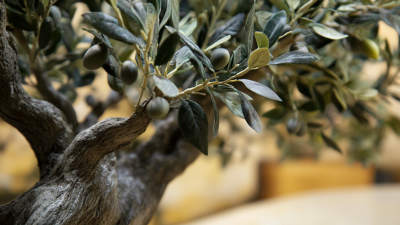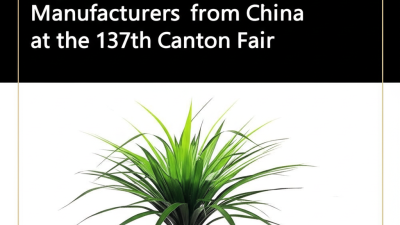
In recent years, the popularity of incorporating greenery into home decor has surged, with a notable shift towards sustainable and low-maintenance options. The global market for artificial plants, including the trending "Artificial Olive Tree Large," is forecasted to reach USD 2.7 billion by 2027, driven by consumer preferences for environmentally friendly and easy-to-care-for decorative solutions.

Unlike live plants, which require constant attention and specific care conditions, large artificial olive trees provide the aesthetic appeal of natural foliage without the commitment, making them an ideal choice for modern households. Furthermore, studies indicate that approximately 70% of homeowners are seeking ways to enhance their living spaces sustainably, positioning artificial plants as a smart and stylish alternative.
Delve into the reasons why integrating an Artificial Olive Tree Large into your home decor not only enriches your environment but also aligns with sustainable living practices, while also exploring essential maintenance tips to keep it looking fresh and vibrant.
Artificial olive trees are an excellent choice for home decor, offering a blend of aesthetic appeal and eco-friendliness. Unlike live plants, artificial versions require no water, sunlight, or fertilizers, making them a sustainable option for those looking to enhance their interiors without the environmental impact associated with conventional gardening. Their realistic appearance ensures that they can mimic the beautiful look of real olive trees, adding a touch of Mediterranean charm to any space. This choice allows homeowners to enjoy greenery all year round without worrying about seasonal changes.
Moreover, the longevity of artificial olive trees makes them a cost-effective alternative. With minimal maintenance, they remain vibrant and attractive for years, unlike real trees that may require frequent replacement or care. This durability not only saves time but also reduces waste, contributing to a more sustainable lifestyle. By choosing artificial olive trees, you’re not only benefitting from their timeless beauty but are also making an eco-conscious decision that aligns with contemporary trends in sustainable living.

Integrating large artificial olive trees into your home design not only adds a touch of Mediterranean charm but also inspires a sustainable aesthetic that aligns with contemporary design choices. These lifelike trees serve as perfect focal points in spacious living areas or as inviting accents in home offices. In spaces where natural light might be limited, the presence of these faux trees can enliven your atmosphere without demanding extensive care or commitment, making them ideal for busy lifestyles. Their neutral foliage allows for versatile styling, complementing a broad color palette and varying décor styles.
When positioning your artificial olive trees, consider creative ways to utilize your space effectively. For instance, placing them in corners can help define areas in larger rooms, while smaller varieties can be grouped on bookshelves or in cozy nooks for added height and texture. The current trend towards greenery in office spaces highlights how these trees can also enhance focus and productivity, serving as a refreshing reminder of nature amidst technology.
Whether in an open-plan living room or a stylish home office, large artificial olive trees provide the perfect blend of style and low maintenance, contributing to a tranquil yet modern environment.
When it comes to maintaining artificial olive trees, keeping them looking fresh requires minimal effort yet can significantly enhance your home’s aesthetics. Start by regularly dusting the leaves with a soft, dry cloth to prevent the accumulation of dirt and debris. A gentle wipe ensures that the foliage retains its natural sheen, making it appear more lifelike. For deeper cleaning, a slightly damp cloth can be used, but be sure to avoid soaking the leaves, as excess moisture could damage the material.
Additionally, positioning your artificial olive trees correctly is crucial for their longevity. Avoid placing them in direct sunlight, which can fade colors over time. Instead, opt for locations that allow for indirect light. For seasonal decor changes, consider rotating your trees to showcase different sides, preventing uneven wear and tear. By implementing these simple maintenance tips, your artificial olive trees can remain a vibrant feature in your home for years to come.
This bar chart illustrates the estimated time spent on various maintenance tasks for artificial olive trees over a month. Dusting is essential to maintain their appearance, while periodic watering and UV protection help keep them vibrant. Proper storage and timely repairs also contribute to their longevity.
When considering the cost-effectiveness of artificial olive trees compared to their live counterparts, the numbers speak for themselves. A report from the American Floral Endowment states that the average lifespan of a live olive tree ranges between 15 to 20 years, with maintenance costs including watering, fertilization, and occasional pruning adding up to significant annual expenses that can average around $200 per year. In contrast, high-quality artificial olive trees can be purchased for a one-time investment of approximately $150 to $500, depending on the size and quality, without any ongoing costs, making them a savvy choice for budget-conscious homeowners.

To maximize the value of your artificial olive trees, here are some tips: First, invest in UV-resistant materials to ensure your trees maintain their color and integrity when placed outdoors. Second, regularly dust or wipe down the leaves to keep them looking vibrant and fresh. Additionally, consider placing your artificial trees in areas that receive moderate lighting, which enhances their visual appeal and creates an inviting atmosphere. By implementing these simple maintenance strategies, your investment in artificial olive trees can bring lasting beauty to your home without the hassle of traditional plant care.
When choosing artificial olive trees for your home, it's essential to focus on sustainable sourcing. Eco-friendly products not only enhance your decor but also promote a healthier environment. Look for artificial trees made from recycled materials, such as recycled plastics, which reduce waste and carbon footprints. Additionally, check for certifications that indicate adherence to environmental standards. Brands that prioritize sustainable manufacturing processes often provide transparency regarding their sourcing and production methods.
Tips for selecting eco-friendly artificial trees include examining the materials used in their construction. Opt for trees with biodegradable components and non-toxic finishes to ensure they do not release harmful substances over time. Moreover, consider the longevity of the product; durable artificial trees reduce the need for frequent replacements, minimizing overall environmental impact. Lastly, investigate the brand's overall commitment to sustainability—brands invested in eco-friendly practices often extend this philosophy to their entire product line, contributing positively to the planet.
| Feature | Details |
|---|---|
| Material | High-quality UV-resistant polyethylene |
| Height | 6 to 7 feet |
| Maintenance | Dusting occasionally, no watering needed |
| Lifespan | 10 years or more with proper care |
| Eco-Friendly Certification | Made from recyclable materials |
| Color | Realistic green leaves with a natural trunk |
| Ideal Locations | Indoor and outdoor settings, patios, and living rooms |






